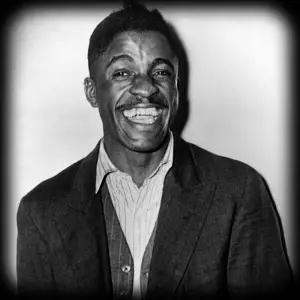Sonny Boy Williamson I, born John Lee Williamson on March 30, 1914, in Madison County, Tennessee, was an American blues harmonica player, singer, and songwriter who played a critical role in shaping the Chicago blues sound during the pre-war and post-war eras. Often referred to as “the father of modern blues harmonica,” Williamson was one of the most influential blues musicians of his time, setting the stage for future generations of harmonica players and blues artists.
Overview of Sonny Boy Williamson I
- Early Life and Career Beginnings: John Lee Williamson was born into a musical family in Tennessee, where he learned to play the harmonica at a young age. By his late teens, he was performing in the Mississippi Delta region, where he was exposed to various blues styles. His harmonica playing soon earned him a reputation for his expressive style and innovative techniques, blending elements of country blues with urban influences.
- Move to Chicago and Rise to Fame: In 1934, Williamson moved to Chicago, where he became a prominent figure in the city’s burgeoning blues scene. His big break came in 1937 when he recorded his first session for Bluebird Records, producing “Good Morning, School Girl,” which became a significant hit. The song’s success established him as a leading blues artist and set the template for many blues standards that followed.
- Musical Style and Innovation: Sonny Boy Williamson I was known for his dynamic harmonica playing and vocal style. He was a pioneer of the “call and response” technique between vocals and harmonica, which became a hallmark of Chicago blues. His harmonica work was characterized by a rhythmic, melodic approach that could mimic the sound of a horn section, and he was also known for his use of “cross-harp” playing, where he would play the harmonica in a key different from the key of the song, giving his music a more fluid and expressive sound.
- Impactful Recordings and Songs: Throughout the late 1930s and 1940s, Williamson recorded a series of influential songs that became blues standards, including “Good Morning, School Girl,” “Sugar Mama Blues,” “Decoration Day,” and “Bluebird Blues.” His recordings for Bluebird Records were highly successful and influential, and his compositions were covered by many artists, contributing to the growth of the Chicago blues style.
- Legacy and Influence: Williamson’s career was tragically cut short when he was murdered in Chicago in 1948. However, his impact on the blues genre was profound. He influenced nearly every harmonica player that followed, including Little Walter, Big Walter Horton, Junior Wells, and James Cotton, who all drew inspiration from his techniques and phrasing. His songwriting also had a significant influence, with many of his songs becoming staples in the blues repertoire.
Impact on Music and Culture
- Pioneer of Modern Blues Harmonica: John Lee Williamson’s innovative approach to the harmonica redefined its role in blues music. He was among the first to popularize amplified harmonica playing, which became a central element of the Chicago blues sound. His playing style, marked by powerful tone, rhythmic phrasing, and bending notes, set the standard for subsequent generations of harmonica players.
- Influence on the Chicago Blues Scene: Williamson was one of the first blues musicians to achieve significant success in Chicago, helping to lay the foundation for what would become the Chicago blues scene in the 1950s and 1960s. His music bridged the gap between the rural acoustic blues of the South and the urban electric blues of the North, influencing artists like Muddy Waters, Howlin’ Wolf, and Elmore James.
- Songwriting and Blues Standards: Many of Williamson’s compositions, such as “Good Morning, School Girl” and “Sugar Mama Blues,” have become blues standards, covered by artists ranging from Muddy Waters to Eric Clapton. His songs are known for their lyrical storytelling, emotional depth, and infectious rhythms, which have resonated with blues musicians and audiences for decades.
- Contribution to the Development of Post-War Blues: Williamson’s recordings were among the earliest to showcase the transition from country blues to the more polished, urban style that would dominate the post-war blues scene. His work set the stage for the next generation of blues artists who would electrify and expand upon his innovations.
- Legacy and Recognition: While often overshadowed by his namesake, Sonny Boy Williamson II (Aleck “Rice” Miller), John Lee Williamson’s contributions to blues music remain foundational. His influence is evident in the evolution of blues harmonica playing and the development of modern blues. He was posthumously inducted into the Blues Hall of Fame in 1980, a testament to his enduring impact on the genre.
References
- Herzhaft, Gérard. Encyclopedia of the Blues. University of Arkansas Press, 1997.
- Santelli, Robert, ed. The Big Book of Blues: A Biographical Encyclopedia. Penguin Books, 1993.
- Wald, Elijah. Escaping the Delta: Robert Johnson and the Invention of the Blues. HarperCollins, 2004.
- Oliver, Paul. Blues Off the Record: Thirty Years of Blues Commentary. Da Capo Press, 1984.
- “Sonny Boy Williamson I.” Blues Hall of Fame. Blues Foundation, 1980.


Leave a Reply